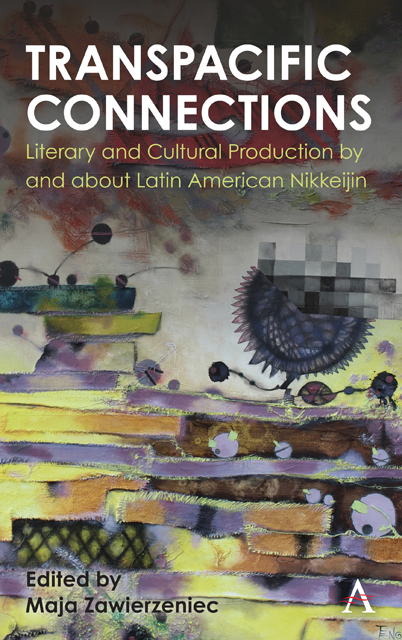Book contents
- Frontmatter
- Contents
- Notes on Contributors
- Introduction
- Chapter 1 The “Japanese Community” in Brazil and its Literary Production: The Functioning of “Death” in Matsui Tarô’s Literary Fiction
- Chapter 2 Contested Modernities: Representations of the Brazilian Dekasegi and the Nipponization of Brazil in Nikkei Cultural Production
- Chapter 3 When Gustave Flaubert Meets Ryūnosuke Akutagawa: “Corazón Sencillo” by Augusto Higa Oshiro. The Short Story of a Peruvian Nikkei Writer
- Chapter 4 Japanese Prints in Tablada’s Writings: Cultural and Media Transposition in ‘El poema de Okusai’
- Chapter 5 The Telenovela Oyuki’s Sin (El Pecado De Oyuki): Las Realidades Del Otro or Mexico through A Japanized Lens
- Index
Chapter 2 - Contested Modernities: Representations of the Brazilian Dekasegi and the Nipponization of Brazil in Nikkei Cultural Production
Published online by Cambridge University Press: 09 December 2022
- Frontmatter
- Contents
- Notes on Contributors
- Introduction
- Chapter 1 The “Japanese Community” in Brazil and its Literary Production: The Functioning of “Death” in Matsui Tarô’s Literary Fiction
- Chapter 2 Contested Modernities: Representations of the Brazilian Dekasegi and the Nipponization of Brazil in Nikkei Cultural Production
- Chapter 3 When Gustave Flaubert Meets Ryūnosuke Akutagawa: “Corazón Sencillo” by Augusto Higa Oshiro. The Short Story of a Peruvian Nikkei Writer
- Chapter 4 Japanese Prints in Tablada’s Writings: Cultural and Media Transposition in ‘El poema de Okusai’
- Chapter 5 The Telenovela Oyuki’s Sin (El Pecado De Oyuki): Las Realidades Del Otro or Mexico through A Japanized Lens
- Index
Summary
The dekasegi (temporary workers) phenomenon was the last major historical landmark for Japanese Brazilians, as they have formed a new minority in Japan that, for the most part, remains segregated from Japanese society. Since the early 1990s, one in five Brazilian Nikkeijin has moved to Japan at least once (it has been estimated that there are 1.5 million Brazilian Nikkeijin), thus creating the third largest community in Brazil, after the Korean and Chinese ones. Although because of the economic crisis in Japan since 2008 the number of Brazilian dekasegi has been reduced from 312,582 to 177,953 in 2014, the recent economic recession in Brazil may turn the tide again. In any case, the remigration or second diaspora has made Brazilian Nikkeijin more transnational than ever before.
By the first decade after the inception of the dekasegi exodus, many Japanese Brazilians had settled and created a vibrant community in Japan. Yet the reverse migration forebodes a grim situation for Latin American Nikkei communities as it aggravates the situation of a population that was already declining due to an aging population, decreased birth rate, intermarriage, and the dilution of Nikkei ethnic identity.
Although emigration was forbidden during the Tokugawa period (1603–1868), temporary internal migration was common. Jerry García explains:
Internal migration had been well established under the concept of dekasegi, the practice of leaving one's home place for temporary work long before the Meiji Restoration of 1868. Yet even by the early twentieth century, the Japanese populace did not look favorably upon the imin (immigrants). In fact, many Japanese emigrants were viewed by their own country as uneducated or lacking a “national consciousness and were often criticized for abandoning the nation.” (García, 2014: 22)
This historical background may reveal the reasons Brazilian dekasegi in Japan are occasionally not well received by Japanese relatives, though both the emperor and the Meiji government encouraged emigration to South America to reduce surplus labor. These widespread and antagonistic attitudes have transformed the dekasegi's image of Japan.
- Type
- Chapter
- Information
- Transpacific ConnectionsLiterary and Cultural Production by and about Latin American Nikkeijin, pp. 33 - 50Publisher: Anthem PressPrint publication year: 2022



